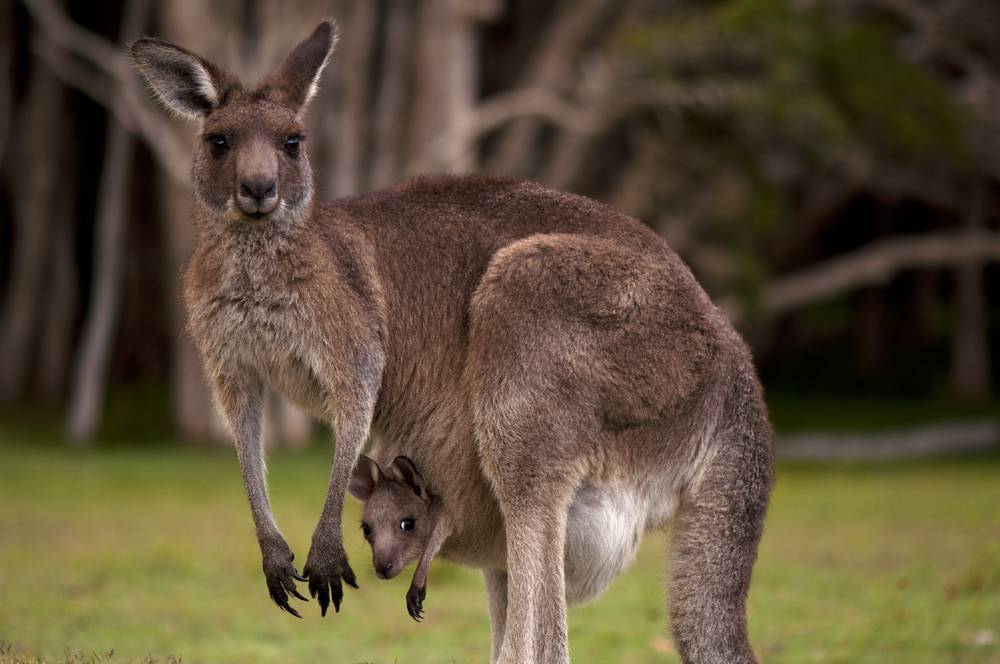Kangaroos, the iconic marsupials of Australia, are not only known for their unique appearance but also for their fascinating behaviors and adaptations. Here are five intriguing facts that shed light on these remarkable creatures.
1. Masters of Jumping:
Kangaroos are renowned for their exceptional jumping abilities. Their powerful hind legs and muscular tails allow them to cover distances of up to 25 feet in a single leap and reach speeds of up to 40 miles per hour. This remarkable skill is not just a means of transportation but also a way to escape predators and cover vast territories in search of food and water.
2. Built-in Pouch:
One of the most distinguishing features of kangaroos is their pouch, a specialized skin fold where they carry and nurse their young, known as joeys. Female kangaroos have a unique reproductive system: after giving birth, their tiny, underdeveloped joeys crawl into the pouch, where they continue to grow and develop while nursing. The pouch provides a safe and nurturing environment for the young joeys during their vulnerable early stages of life.
3. Herbivorous Diet and Energy Efficiency: Kangaroos have adapted to their environment by evolving a herbivorous diet. Their specialized stomachs allow them to efficiently break down tough plant material. Interestingly, kangaroos are able to conserve energy by producing less heat compared to other mammals of their size. They can enter a state of "torpor," lowering their metabolic rate during periods of extreme heat or scarcity of food, which helps them survive in Australia's challenging environment.
4. Social Dynamics and Communication:
Kangaroos exhibit complex social structures. They live in groups called mobs, which range in size from just a few individuals to over a hundred. Within these mobs, kangaroos establish dominance hierarchies, with larger and older individuals often holding higher status. Communication among kangaroos involves a variety of vocalizations, body movements, and gestures, such as thumping the ground with their hind legs to alert others of potential danger.
5. Diverse Species and Adaptations: While the red kangaroo is the most recognizable species, there are over 60 different kangaroo species, ranging in size from the small wallabies to the larger grey kangaroos. These species have evolved diverse adaptations to thrive in various environments across Australia, from arid deserts to grasslands and forests. Some, like the tree-kangaroos, have even adapted to life in trees.
In conclusion, kangaroos are remarkable creatures with a range of adaptations and behaviors that have enabled them to thrive in the unique Australian landscape. From their extraordinary jumping abilities to their built-in pouches and energy-efficient metabolism, kangaroos continue to captivate the world with their intriguing characteristics and play an essential role in the ecosystem of the Land Down Under.


